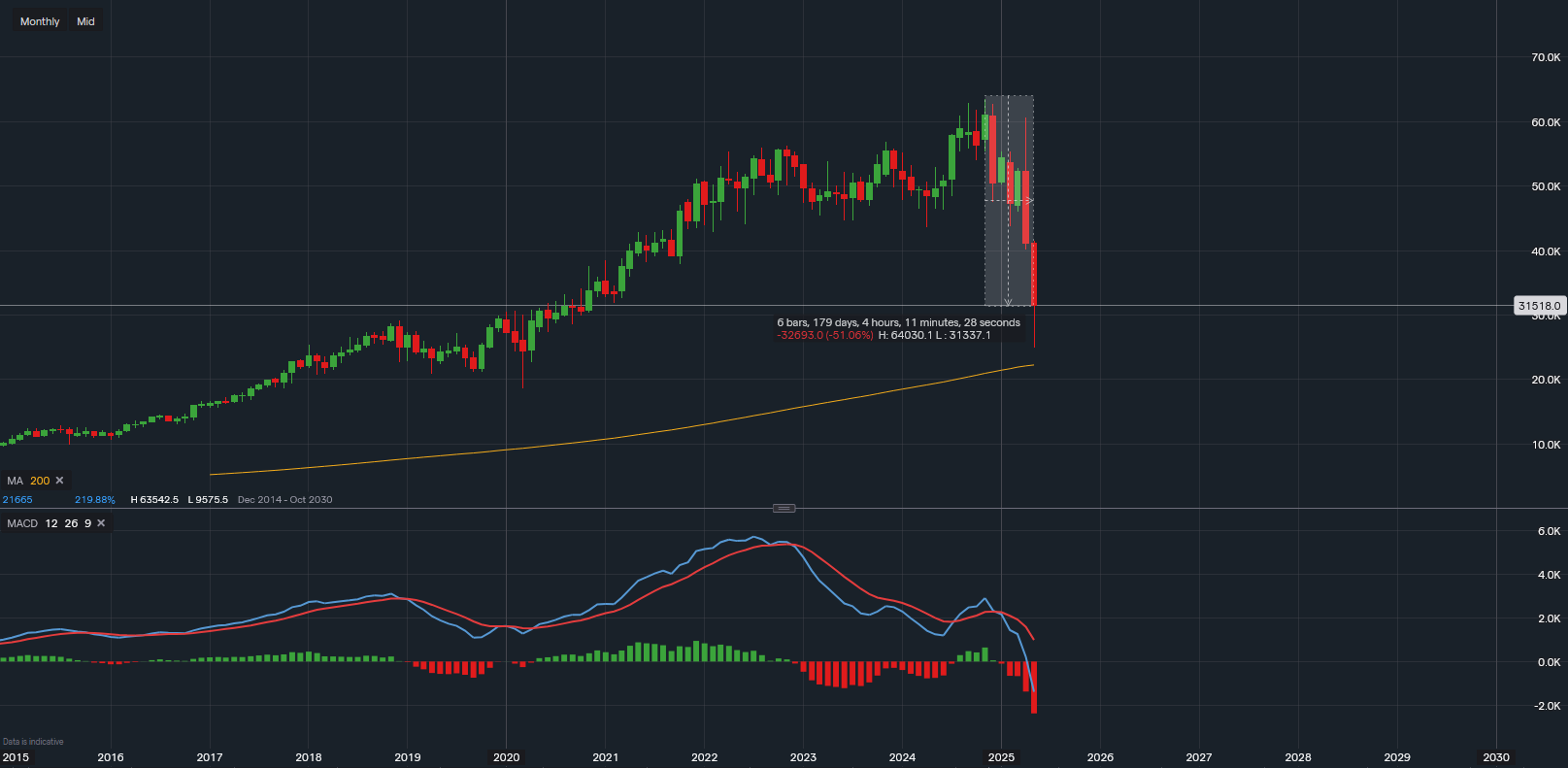Is UnitedHealth Group (UNH) Stock a Buy After a 51% Drop? A Closer Look at the Valuation and Technicals
UnitedHealth Group’s (NYSE: UNH) stock has seen a sharp decline in recent months, dropping over 51% from its all-time high since November. Although the share price plunged as much as 61% to a low of $248.93, it has since recovered somewhat. As of the latest pre-market trading, UNH shares are priced at approximately $315.18, down just over 2% today — likely due to profit-taking following the recent rally from its lows.
Despite a gloomy near-term outlook, including uncertainty surrounding the Department of Justice (DOJ) criminal investigation and the resignation of its CEO, the valuation of UnitedHealth stock now looks increasingly attractive. Currently, UNH trades at a price-to-earnings (PE) ratio of 13.4, with a forward PE ratio of 12.27, which is well below its historical averages. This could indicate a potential buying opportunity for long-term investors.
Technical Analysis: Key Support Levels and Oversold Indicators
From a technical perspective, the stock recently approached its 200-day moving average on the monthly chart — a level it hasn’t touched since 2009, post-global financial crisis. Additionally, the MACD (Moving Average Convergence Divergence) indicator is now lower than it was during the 2009 crash, suggesting that the stock may be oversold in the near-term.
However, traders should exercise caution. Since this is a monthly timeframe, the MACD's current position could continue to put downward pressure on the stock price until there are signs of stabilisation. Key support levels to watch include the recent low of $248.93 and the 200-month moving average at $222.34.
Below is a breakdown of the company’s financials for the year of 2024.
Income Statement (Profit & Loss)
Key Figures (2024):
- Total Revenue: $400.3 billion (+7.7% YoY)
- Net Earnings: $15.2 billion (-34% YoY)
- Earnings per Share (Diluted): $15.51 (-35% YoY)
- Operating Margin: 8.1% (down from 8.7% in 2023)
- Medical Care Ratio (MCR): 85.5% (up from 83.2%)
- Return on Equity: 15.9% (down from 27%)
Analysis:
- Revenue growth was driven by Optum Rx, Optum Health, and domestic UnitedHealthcare offerings.
- Decline in earnings was largely due to:
- $8.3B losses from divesting Brazilian and South American operations
- Change Healthcare cyberattack, which added $2.2B in response costs and disrupted Optum Insight revenues
Balance Sheet
Key Figures (as of Dec 31, 2024):
- Total Assets: $298.3 billion (+9% YoY)
- Cash & Equivalents: $25.3 billion
- Long-Term Debt: $72.4 billion (+24% YoY)
- Total Liabilities: $195.7 billion
- Shareholders’ Equity: $98.3 billion
Analysis:
- Increase in long-term debt reflects new debt issuance to support investments and acquisitions.
- Strong equity growth despite foreign currency losses from the South America exit.
Cash Flow Statement
Operating Activities:
- Net cash from operations: $24.2 billion (-17% YoY)
Investing Activities:
- Capital Expenditures: $3.5 billion
- Acquisitions (net): $13.4 billion
Financing Activities:
- Share Repurchases: $9.0 billion
- Dividends Paid: $7.5 billion
- Loans to providers (cyberattack support): $4.5 billion
Analysis:
- Cash flow from operations declined due to higher medical costs, cyberattack impact, and working capital changes.
- Cash position remains strong, and liquidity is supported by large bank credit facilities.
Forward-Looking Outlook
- UnitedHealth anticipates growth from:
- Expansion in Medicare Advantage and Optum Health services
- Continued investment in technology, care delivery, and pharmacy benefit management
- Cyberattack recovery expected to carry into 2025 but at a reduced financial impact.
- The company highlights strong alignment with long-term trends like value-based care and personalised medicine.
Strengths (Why It Might Be a Good Investment)
1. Strong Core Business & Diversified Revenue
- Revenue continues to grow steadily (+7.7% YoY to $400B).
- Diversification across Optum (tech, pharmacy, analytics) and UnitedHealthcare (insurance) cushions against shocks in one area.
2. Solid Long-Term Positioning
- Aligns well with structural trends in healthcare:
- Aging population
- Shift to value-based care
- Growth in Medicare Advantage
- The Optum platform (especially Optum Health and Rx) is increasingly central to U.S. healthcare infrastructure.
3. Healthy Cash Flow & Liquidity
- Despite a rough year, operating cash flow remains strong at $24B.
- Balance sheet still resilient with $25B+ in cash.
Risks & Concerns (Why You Might Be Cautious)
1. Cyberattack Impact
- The Change Healthcare cyberattack was costly ($2.2B direct + $4.5B loans to affected providers).
- While largely non-recurring, this exposed vulnerabilities in tech infrastructure.
2. Earnings Decline
- Net earnings fell 34%, and EPS dropped by over $8 (from $23.86 to $15.51).
- Margins (operating, net, and return on equity) have also compressed.
3. Debt Levels Increased
- Long-term debt grew by 24% to over $72B — used partly for acquisitions and share buybacks.
- The return on that capital will need to prove out in the next 1–2 years.
4. Regulatory Pressure
- Heavily regulated business; potential changes to Medicare Advantage reimbursements or PBM rules could affect profitability.
Market Sentiment Check (Context)
While the 2024 report reflects some major short-term disruptions, the company’s long-term fundamentals remain robust. Wall Street may have already priced in much of the cyberattack impact, meaning a recovery in earnings could be a tailwind for the stock in 2025.
(Sources: unitedhealthgroup.com)

